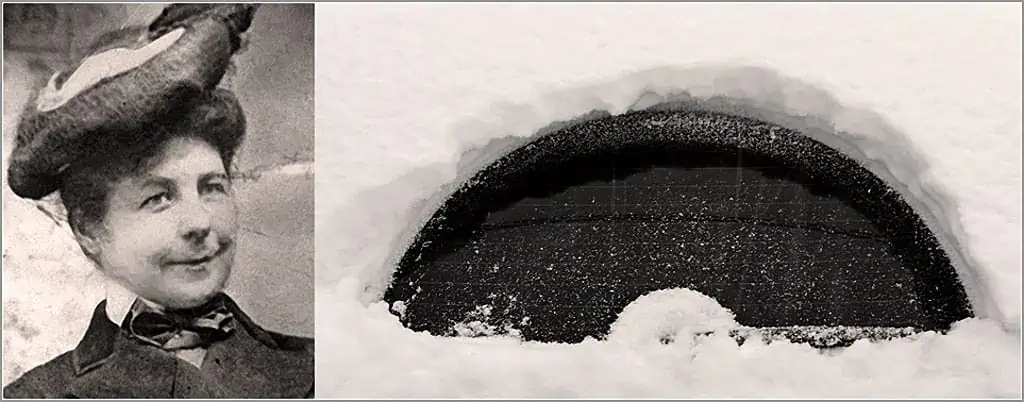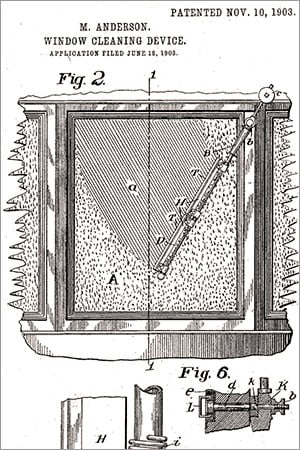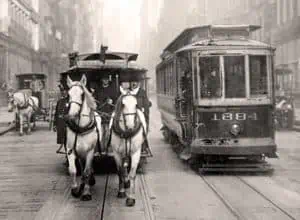
If you’re reading this from anywhere along the east coast and dealing with the after-effects of our New Year’s “bomb cyclone,” you know how annoying that highway spray of grime, salt and slush kicked up on your car’s windshield can be. Meet today’s Wednesday’s Woman, Mary Anderson (1866-1953), the female inventor who created the common, everyday, indispensable windshield wiper.
An entrepreneur who was no stranger to innovation, Anderson had been a real estate developer and the owner/operator of a cattle ranch and vineyard in California. In the winter of 1902 she was visiting New York City. While riding a streetcar on a blustery day, she watched the conductor repeatedly reach through his side window to clear snow and sleet from the windshield by hand. Specifically designed for bad weather, the trolley’s window was split into individual panes that opened to allow the driver to scrape away ice and snow. Problem was, every time he did so, both he and the passengers seated in the front of the streetcar — including Anderson — got the brunt of the nasty weather.

Anderson’s patent
Her experience that day started Anderson thinking about a blade of some sort that could be hand-operated to do the job from inside the car. Returning home to Birmingham, Alabama, she lost no time making sketches and refining her idea. Anderson then wrote up what she described as a spring-loaded wooden arm capped with a rubber blade; the mechanism would attach to a lever within easy reach of the steering wheel. A counterweight on the lever kept the wiper in direct contact with the window as the blade moved across the windshield. She found a designer and hired a local company to produce a working prototype. Once satisfied, she applied for and, in 1903, received a 17-year U.S. Patent for the windshield wiper.
Anderson tried to interest the just-emerging automobile industry in manufacturing her “window cleaning device for electric cars and other vehicles to remove snow, ice or sleet from the window,” but found no takers. After all, this was a time when the “horseless carriage” was still viewed with skepticism. Henry Ford’s Model A had yet to hit the streets, and his famous Model T wasn’t even a gleam in the automaker’s eye.
Never earned a penny
Company executives dismissed Anderson’s idea, saying the wiper’s movement would actually be dangerous, distracting drivers and causing accidents. Today her family proudly keeps a letter she received from one of the companies stating, “We do not consider it to be of such commercial value as would warrant our undertaking its sale.” Anderson’s patent eventually lapsed until others would copy and improve upon her original idea.

The mechanical windshield wipers we now take for granted had become standard equipment in all American-made vehicles by 1916, but Mary Anderson never profited from her invention. Described by a great niece as a “vivacious, progressive woman” she never married and was self-supporting throughout her lifetime.
Though she never have made a penny from her idea, Anderson’s legacy remains. Next time you’re playing the board game Trivial Pursuit and the question “What woman invented the windshield wiper in 1903?” comes up, you’ll know the answer. Mary Anderson was inducted into the Inventors Hall of Fame in 2011. She is buried in Elmwood Cemetery in Birmingham, Alabama.
